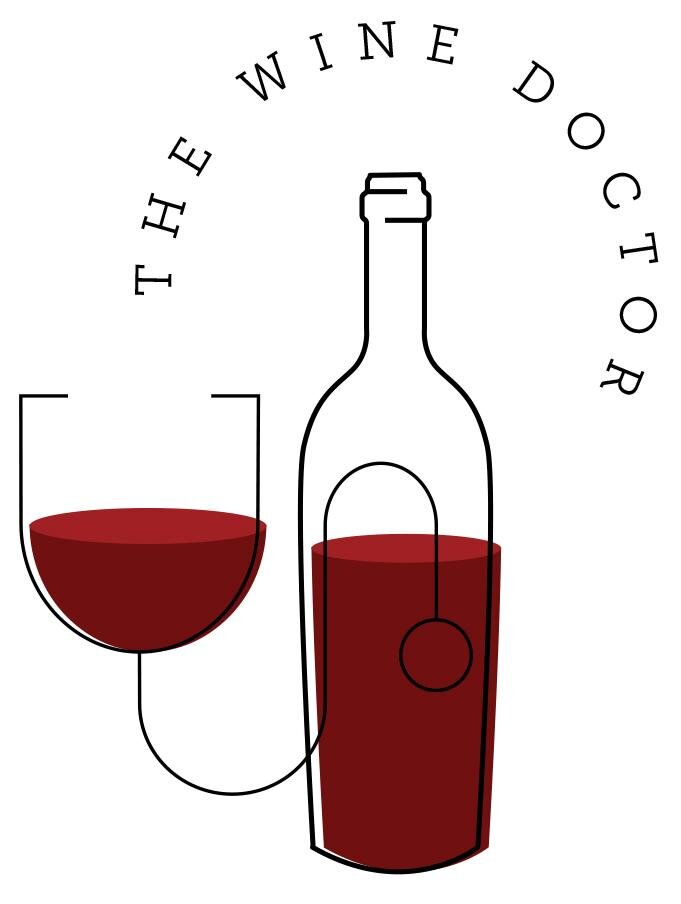Anything but Petite
We are headed to familiar territory, Napa Valley, in search of a grape with the wrong name and a winery distinguished by an apostrophe.
And once again, I am about to disappoint my white wine followers - I promise to make it up to you! Today we are going to learn about a mostly American red grape varietal with a misleading name: Petite Sirah.
Please delete the email you are already composing telling me I misspelled “Syrah”: I didn’t. Many of you enjoy that rich red wine known as Syrah in France (and Shiraz in Australia). It may sound the same, but our wine has its own identity, and it’s more than just substituting an “i” for a “y”…
Petite Sirah, as it is now known, had its origins in France in the late 1800s. It was created by a botanist whose last name was Durif. He crossed the Syrah grape with a rare French Alps varietal called Peloursin. He named it, what else, Durif! The “Durif” vines soon made their way to America, where they thrived in the warm climate and got a new name: Petite Sirah.
Ok, so what’s wrong with the name? Well, we already know it’s not Syrah. But the real problem is that “Petite” moniker. This wine is anything but petite: in the words of veteran Napa winemaker Tor Kenward, Petite Sirah is “big, bold, dark, brooding and teeth-staining”.
The only thing small about Petite Sirah are the berries, which have thick skins. This contributes to its dense, inky color and high tannins.
A good Petite Sirah will be concentrated and layered, with flavors of dark fruits, dark chocolate and black pepper. Done right, it is a marriage of power and complexity.
So who does it right? Dust off your grammar skills and I will tell you.
Napa Valley has many famous districts and viticultural areas. One the oldest is a name that may be familiar to you: Stags Leap. It sits on the eastern edge of the valley, and is known for its gravelly, volcanic soil. This location produces consistently warm days and cool nights, perfect for making great red wines. Take a look:
Stags Leap is that pinkish-colored area to the right of the light green one in the middle of the Valley.
Stags Leap District is home to two well known producers who both use the Stags Leap name: Stags’ Leap Winery and Stag’s Leap Wine Cellars. Turns out they both started producing wine in the same year, 1972, and both claimed the Stags Leap name. Not surprisingly, they ended up in court, where it was decided that both had rights to the name.
The “solution”: one would use an apostrophe before the last “s”, the other would place the apostrophe after. Brilliant, right? No comment. Moving on. Check out the labels:
Our wine is the flagship of the plural producer, Stags’ Leap. Space and your attention span won’t permit some deserved praise for Stag’s Leap, other than it helped put Napa Valley Cabernet Sauvignon on the world stage by beating some famous Bordeaux wines in the “Judgement of Paris” blind tasting in 1976. There’s a fun movie called Bottle Shock you can watch to learn more (although the movie focuses on the American white wine winner, from Chateau Montelena).
Our Wine: Stags’ Leap Petite Sirah 2018 Should be widely available. Depending on where you buy, maybe $30-$40
Stags’ Leap sits on a property that has been growing grapes since the late 1800s. Over the years it had multiple owners who weren’t focused on making wine. The property was neglected and for a time uninhabitable. In 1970 it was acquired by Carl Doumani who spent 9 years turning Stags’ Leap into a beautiful destination, producing serious wine, anchored by Petite Sirah. He sold it in 1996 to Beringer, now part of Treasury Wine Estates. Today the property covers 240 acres, 85 of which are planted with grape vines.
The Manor House at Stags’ Leap
Tasting:
Wow. Pour some Petite Sirah into your glass and you’ll see what “dark and brooding” means. The color is opaque - deep purple. On the nose, this wine is full of dark fruits, some spice, maybe a little bramble. Petite Sirah is one of those wines that really should be decanted. I did, but it was hard to wait! On the palate, the Stags’ Leap delivers a rich blend of blueberries, stewed plums and a little dark chocolate/cocoa powder. It is absolutely mouth-coating! This is where the tannins kick the door in. If you are still not sure what tannins feel like in your mouth, drink this wine. You’ll recognize tannins from here on out. They provide the structure for Petite Sirah’s long finish. This vintage is not quite 100% Petite Sirah: there are small percentages of Grenache and Syrah, which help add to the complexity. The wine spent over a year in used oak before bottling (aging in new oak would push the tannins too high).
dead soldier
Food:
Simply put: Petite Sirah deserves food as big and bold as it is. The high tannins need to be matched with richer, more fatty food. This is a good example of congruent pairing, where you need the fat content to balance the tannins, creating a harmonious sensation…the so-called “Fifth Taste”, or Umami (“You Mommy”…couldn’t resist). Think of it as savory, or as the Japanese would say, “deliciousness”.
Here are some winning combinations: Pulled Pork (I had mine with a pulled pork BBQ sandwich; wish I’d gone fancier); Venison; Braised Short Ribs; Cassoulet; Lamb Ragout; North African cuisine (with its exotic spices). Yum.
The Bottom Line:
With colder weather closing in, and the hearty fare that goes with it, now is the perfect time to broaden your horizons and experiment with Petite Sirah. But stay with best of breed; look for the Stags’ Leap. And be careful as you swirl and decant: it’ll stain more than just your teeth…
Until next time, Cheers






